
Contents










Focus · Written by Kim Samuel Photographed by Studio Kenn
Resurrection of the Old
‘Newtro’ Living in Yeongju
Long before the advent of the term “newtro culture,” or the combination of the modern features of the present (new)
with the analog sensibility of the past (retro), Yeongju, a small city in Gyeongsangbuk-do Province,
was undergoing remodeling in 2014 while preserving its longstanding history and lifestyle.
This cultural hub’s traditions and cultural heritage from yesteryear continues to attract visitors.
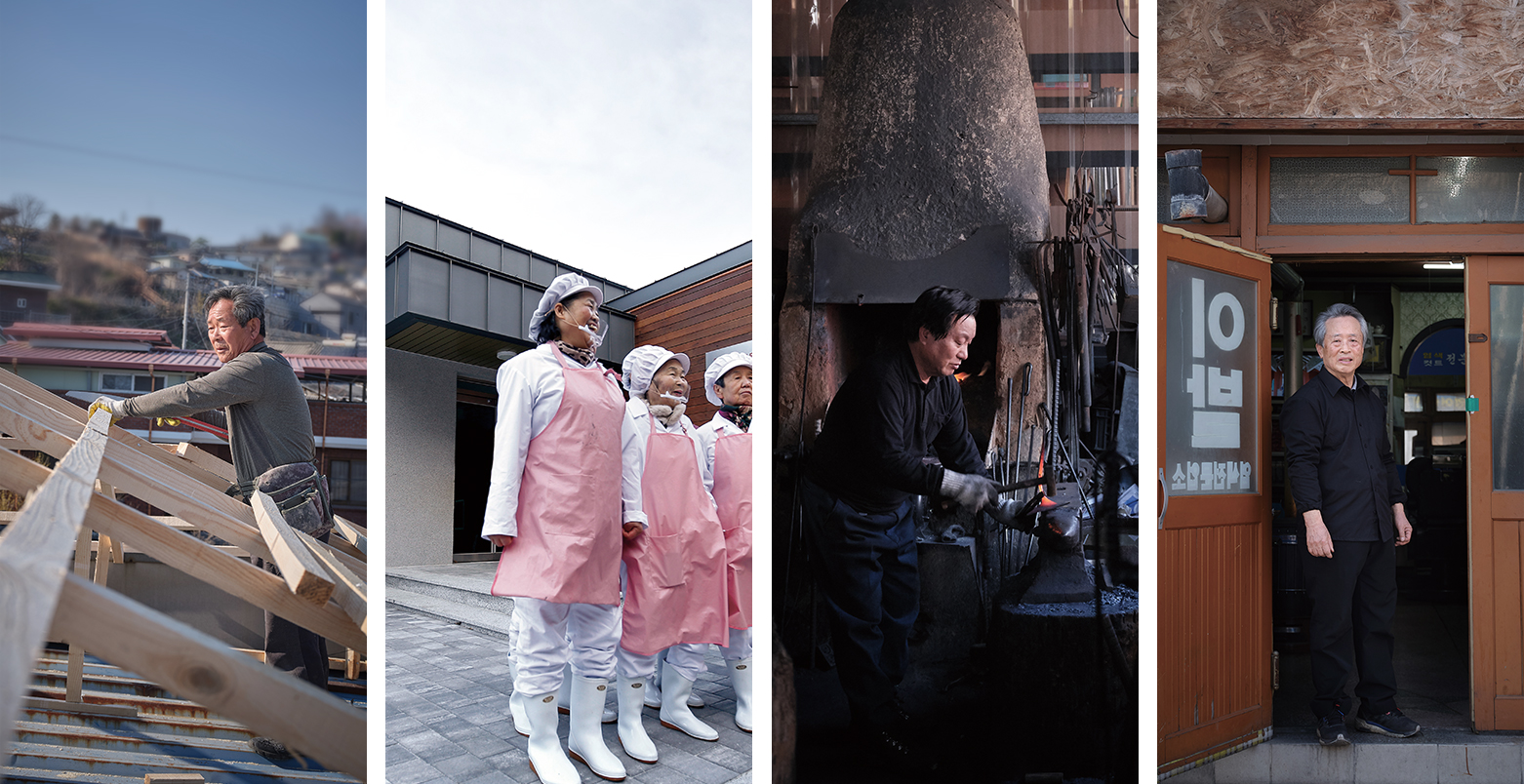
Until the 1970s, Yeongju was a hub of railroad transportation with a population of 180,000, a number that kept falling through 2010 amid the old city deteriorating into a hollow and aged area. A change in the air came in 2014 after Yeongju was designated a leading business district to undergo urban regeneration. On streets with restored modern buildings that sport hanok (traditional Korean architecture), small and old-style stores create a unique scene while a village community of senior citizens breathes new life into the region. A barber’s shop and a blacksmith’s workshop, both of which have occupied the same place for decades, have also contributed to the city’s revival.
Urban regeneration refers to a range of efforts to not just prevent a region from hollowing out during new town development but also stimulate its stagnant economy while preserving the original environment, culture and history. In Korea, urban regeneration began to see tangible results with the 2013 enactment of the Special Act on Promotion of and Support for Urban Regeneration. Yeongju stands out among the 13 leading areas of the project, winning the Manifesto Award for Gyeongsangbuk-do Province as a benchmark for urban regeneration.
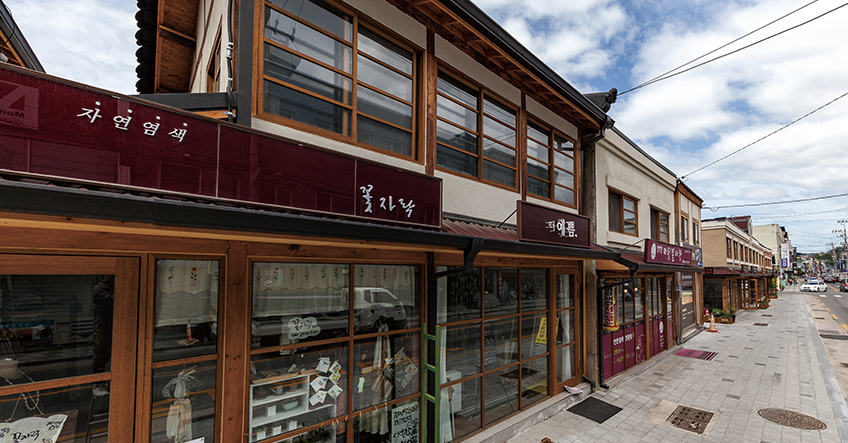
Husaeng Village is refurbished with a modern look. © Kim Min Chul
Silver Lining from Senior Citizens
The essence of urban regeneration is not mere redecoration of an old building but rather breathing new life into the community for residents. At Guseong Park, visitors can walk up to the top of the walkway for a breathtaking view of the old town just below their feet. Across the street from Jungang Market is Guseong Village, where the company Halbae and Halmae operates; the name refers to sentimental Korean terms for “grandpa” and “grandma.” It opened Halmae Muk (acorn jelly) Factory and Halbae Carpenter’s Shop. Despite its small size, the village was cited for its excellence, the only local government in Gyeongsangbuk-do Province to achieve the feat, from the 2018 Balanced Development Project Assessment run by the Presidential Committee for Balanced National Development. Earlier in 2017, the village received the grand prize (Minister of the Interior and Safety Award) at the Village Company Expo and Community Excellence Competition.
Village residents, most of whom were laborers who had relocated to find work on the railroads, are mostly in their 70s and 80s. They usually relax and spend time at a senior citizens’ facility or the village community center. Sixteen elderly women, however, chose to use their time more productively instead of playing yunnori (traditional Korean folk game). They opened the social cooperative Halmae Muk Factory as muk (acorn jelly) and dubu (tofu) made by grandmothers are widely popular in Korea because of their delicious taste. For the elderly workers, the factory is a workplace, rest area and playground. The profits are divided evenly among staff and comprise nothing more than a weekly allowance, but workers still donate 10 percent of their earnings to fellow senior citizens in the region. As the popularity of the taste and background of dubu and muk from the region rises, plans are in place to host simple tasting and hands-on workshops.
Halbae Carpenter’s Shop, a project chosen from a 2014 contest hosted by the Ministry of Land, Infrastructure and Transport, is a benchmark for urban regeneration in the Guseong Village Zone of Yeongju. Prior to the shop’s opening, village residents had studied urban regeneration, socioeconomics and other subjects since 2015 to set up and implement operations. Opened in 2017, a year after the factory, the carpenter’s shop performs woodworking tasks such as furniture making or home repair. This business is more than just part of an urban regeneration project; it provides a model solution to tackle Korea’s rapidly aging society, one of the country’s most pressing issues, while simultaneously initiating active participation by locals.
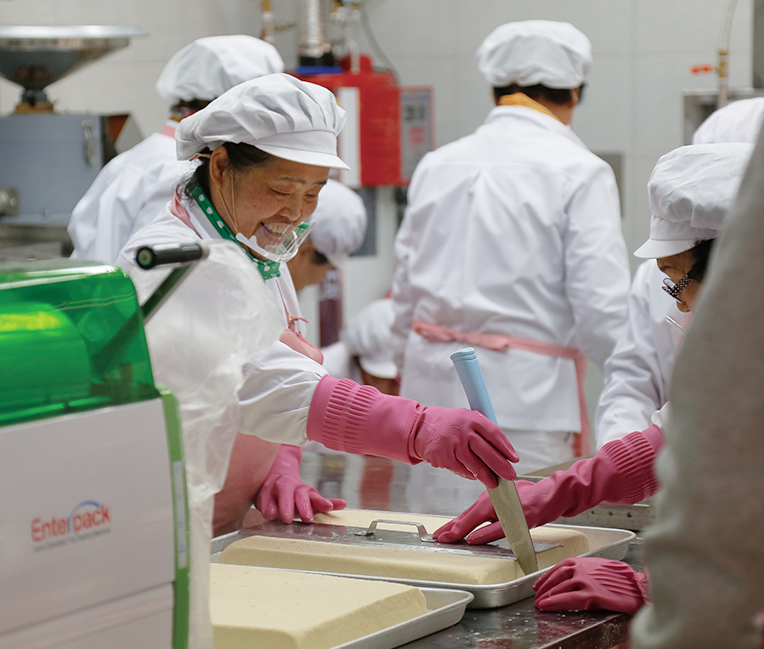 Workers at Halmae Muk (acorn jelly) Factory enjoy making dubu (tofu). © Kim Min Chul
Workers at Halmae Muk (acorn jelly) Factory enjoy making dubu (tofu). © Kim Min Chul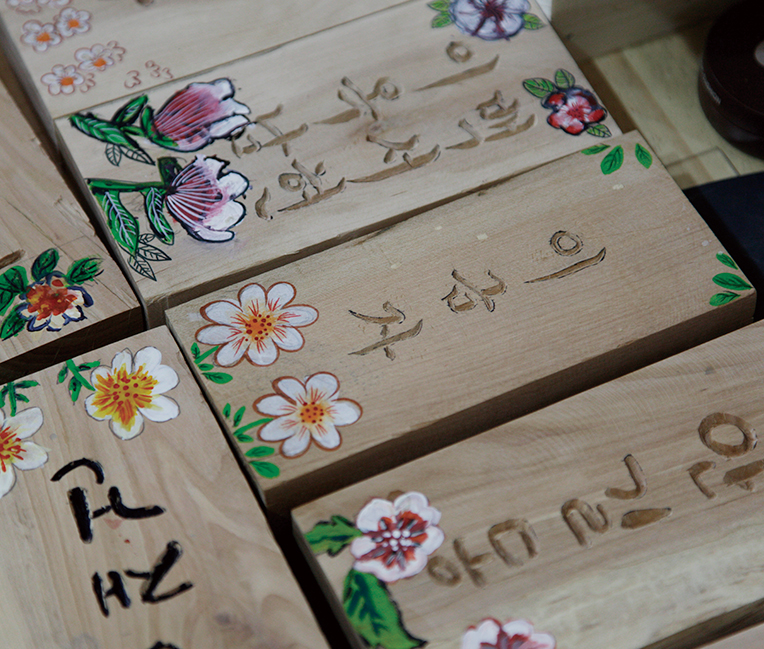 Yeongju locals made doorplates with their names at Halbae Carpenter’s Shop © Kim Min Chul
Yeongju locals made doorplates with their names at Halbae Carpenter’s Shop © Kim Min ChulAging in Style
In Korea, barber shops have mostly made way for modern hair salons. Thus seeing an old barber shop during a visit to Yeongju can feel like going back in time. Yeonggwang Barber Shop has served customers for over 80 years. Starting out as Kukje Barber Shop in the 1930s, it changed its name to Zion Barber Shop and again to Yeonggwang Barber Shop, and has used the same name since the 1970s. Featuring a wooden and slate structure typical of the modern industrial period of 1950s Korea, the establishment features a partially complete design but remains an important piece of modern heritage in downtown Yeongju.
Upon entering this barber shop, which is situated on the ground floor of a two-story Japanese-style house, a unique soap fragrance fills the air. Just two to three chairs are inside with hair dye containers crowding the space between mirrors. Most of the clients are regulars. Lee Jong-su, a barber there for nearly five decades, plans to set up a small exhibit on the history of Korean barber shops as well as a rare collection of old hairstyling tools including dual-hand hair trimmers and pidaes (strips of leather) used to sharpen razor blades.
The street housing the barber shop, featuring the former Yeongju Station building, together with modern-day homi structures, the Pungguk Rice Mill, Yeongju Jeil Church and others built between the 1930s and 60s, has been designated a cultural heritage site. Yeongju Modern Culture and History Street is the country’s first street to earn this honor.
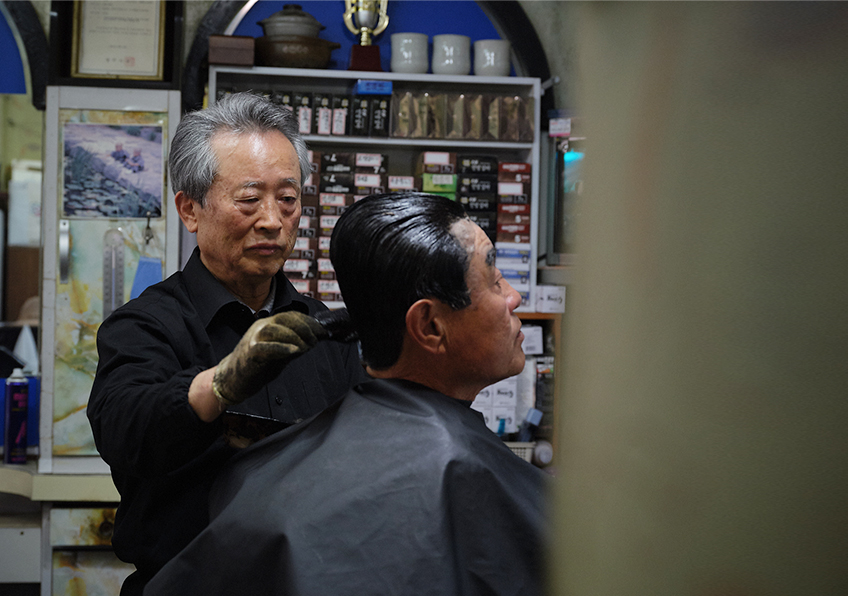
A hair dresser’s hair turned grey after all the years of his service.
Traditional Goods in Modern Market
One of the hottest places in Yeongju is Yeongju Blacksmith. Located by a broad road behind Yeongju Station, the resident blacksmith Seok Noh-ki has shot to global fame through Amazon. com and eBay thanks to his homi (traditional Korean agricultural tool similar to a hoe). A store for agricultural equipment in Yeongju posted the product online for Seok, a master craftsmen who at the time had no idea what Amazon was, let alone an online mall. This seemingly harmless action led to his export of 2,000 homi last year, and more than 3,000 are expected to be sold this year.
Despite its sudden success, Yeongju Blacksmith was not born overnight. Seok began as a blacksmith’s apprentice from age 16 in 1987, learning how to make a variety of agricultural tools such as sickles, hoes and mattocks through traditional methods. His old-school approach eventually earned him the honor of the top master craftsman in Gyeongsangbuk-do Province. On one side of the factory, which he opened at age 23, is a forging hammer he installed at the time; it stands in stoic form and appears as a relic. Here, any agricultural equipment—including his trademark homi—can be custom made. Despite his global fame, the majority of his clients remain farmers.
His homi, costing about KRW 5,000 domestically, sells for far higher abroad, ranging from USD 14.95 to 16.89. Yet his item is seeing a sales increase as it is ranked among the top 10 gardening tools on Amazon.com. A web search for “homi” puts Yeongju Blacksmith’s edition atop the search list, though imitations with the same name have begun to appear. “Digging, grounding, removing all kinds of weed or even cutting small in-ground tree roots became so easy!” This kind of consumer praise in 2018 shows how well the traditional Korean tool is received overseas. Thus Seok’s homi, whose secret is simply high quality steel molded with bare hands and old-school knowhow, is evidence that in Yeongju, things from the past definitely have a place in the present.
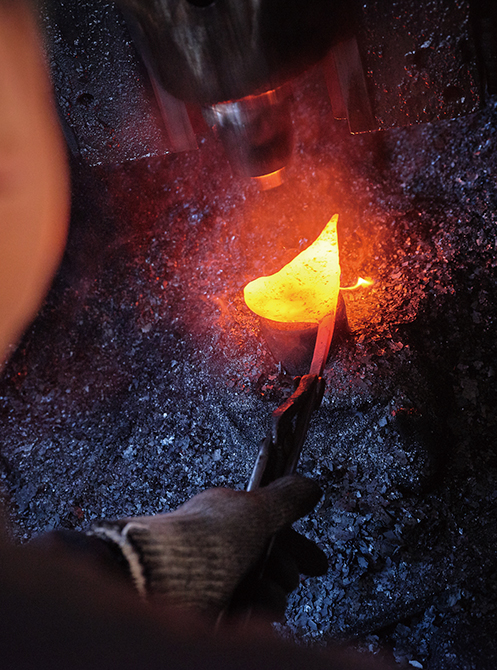 Each hoe is handmade with a master craftsman’s technique.
Each hoe is handmade with a master craftsman’s technique. The Yeongju workshop’s name is carved on the hoes, a traditional farming tool.
The Yeongju workshop’s name is carved on the hoes, a traditional farming tool.Other Articles















